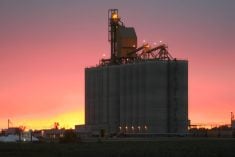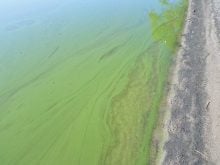Grass isn’t just something that covers the ground until we can find something better to grow. Grass, and the broader category of forages, is a $2 billion dollar crop annually in Alberta and when you start adding its value to the entire Canadian livestock industry, the environment and society in general, well it’s value easily could run up to $10 to $20 billion across the country.
That “value” message is one the relatively new Alberta Forage Industry Network (AFIN), and the Canadian Forage and Grassland Association (CFGA) are hoping to impress upon farmers, processors, researchers, government-decision makers and the public in general.
Read Also

Cancer agency reclassifies another herbicide ‘probably carcinogenic’
The WHO’s cancer research agency has now put atrazine, a herbicide well known to corn growers, in the same potential-hazard category where the agency put glyphosate.
Everyone oohs and ahs over the great economic powerhouses canola and wheat as being the real cash crops for Western farmers. Sure forages — pasture and hayland — are important for feeding cattle, but quite often it’s stuff that grows on marginal land that isn’t suitable for anything else — not like a real crop.
And let’s face it, the forgivable nature of forages can make it a very forgettable crop too. Throw some seed in the ground and as long as it gets a bit of rain and sunshine it will grow for years before it has to be reseeded. And even if you hammer the heck out it, it seems to keep coming back.
The CFCA and provincial organizations such as AFIN, the Saskatchewan Forage Council and Manitoba Forage Council, are working to change that perception of forages. It is a true crop and it has value.
Following a similar move by the Saskatchewan Forage Council, the Alberta Forage Industry Network just completed an economic analysis of forage value to the provincial economy. Report author Stephanie Kosinski says there are some areas where the value is only a good guestimate, but aside from those, there are hard numbers too.
The report shows the direct value of forages in hay, silage, compressed hay, processed alfalfa, pasture, sod and other forage-related products is about $1.5 billion annually. Indirect values — where calculation gets a little fuzzy — include erosion control, protecting water quality, recreational values, carbon sequestration, and wildlife habitat. Those values are estimated at plus or minus another $1 billion.
So this is no slouch of a crop. As Alberta Agriculture assistant deputy minister John Knapp pointed out at the AFIN annual meeting, if you don’t have forages you don’t have a livestock industry in Alberta, or anywhere, really. And these are words from an old sheepherder, who earlier in his career was a shepherd in the Scottish highlands. The man understands grass.
Part of the role of AFIN, its Saskatchewan and Manitoba counterparts and the national CFCA is to raise the profile of the forage industry. Research is needed to develop improved forage varieties and improved agronomics. Farmers need to be made aware that improved management of forages will increase productivity and stand longevity. These associations are also working on market development — looking to find a range of large and niche markets for a range of products and learn the quality specifications so those products can be produced in Alberta and Western Canada. These associations are also working on logistics issues — how do you get X-amount of dry forage product from Point A to Point B at a reasonable cost.
The Manitoba Forage Council, for example, was looking to the Port of Churchill as a possible handy salt-water port for exporting forage products out of the eastern Prairies, but a recent report showed that is not an option without port upgrades to handle containers. But those are the sort of transportation and handling issues and solutions these associations hope to address.
So if you haven’t shown your forages any love lately, it may be time. Don’t get sucked into a trendy, lucrative quick fix like growing canola. Plant some alfalfa, or a good brome grass or a fescue, and discover the grass can be greener on your side of the fence.
Lee Hart
Some more words of wisdom
Age
Because they had no reservations at a busy restaurant, an elderly couple were told there would be a 45-minute wait for a table. “Young man, we’re both 90 years old,” the husband said. “We may not have 45 minutes.” They were seated immediately.
Politics
With a provincial election campaign rolling in Alberta, one critic recently speculated that the reason politicians try so hard to get re-elected is that they would hate to have to make a living under the laws they’ve passed.
Final words
Three friends from the local congregation were asked, “When you’re in your casket, and friends and congregation members are mourning over you, what would you like them to say?”
Artie said, “I would like them to say I was a wonderful husband, a fine spiritual leader, and a great family man.” Eugene said, “I would like them to say I was a wonderful teacher and servant of God who made a huge difference in people’s lives.” Al said, “I’d like them to say, ‘Look, he’s moving!’”
Life
Women and cats will do as they please, and men and dogs should relax and get used to the idea. †















